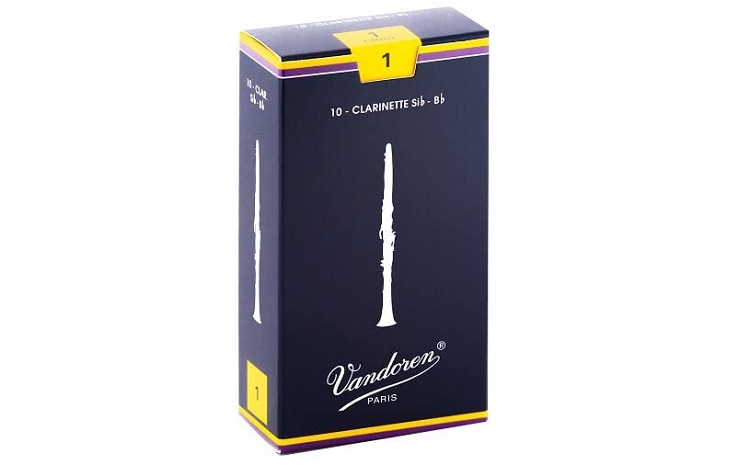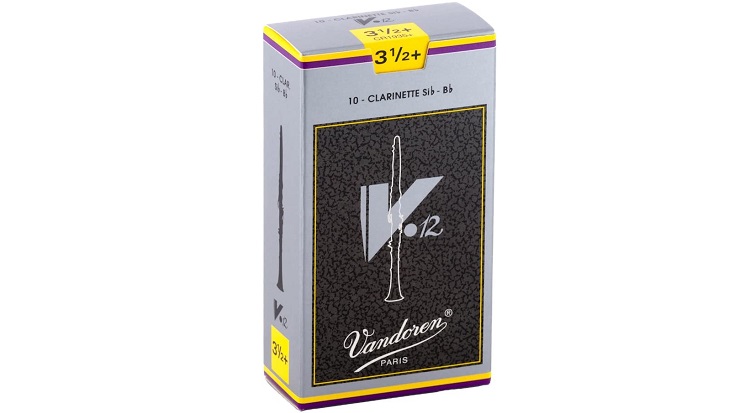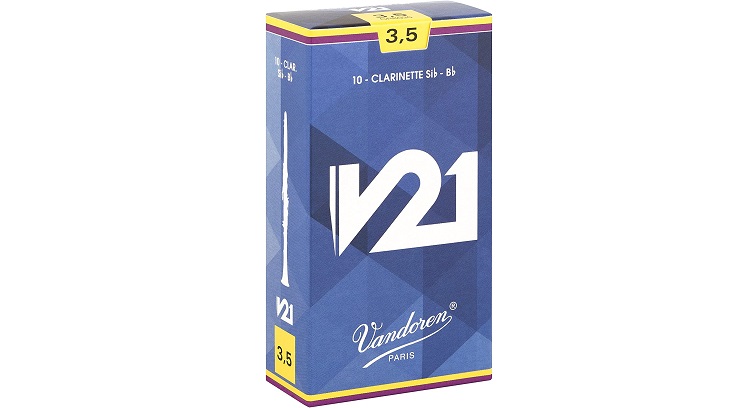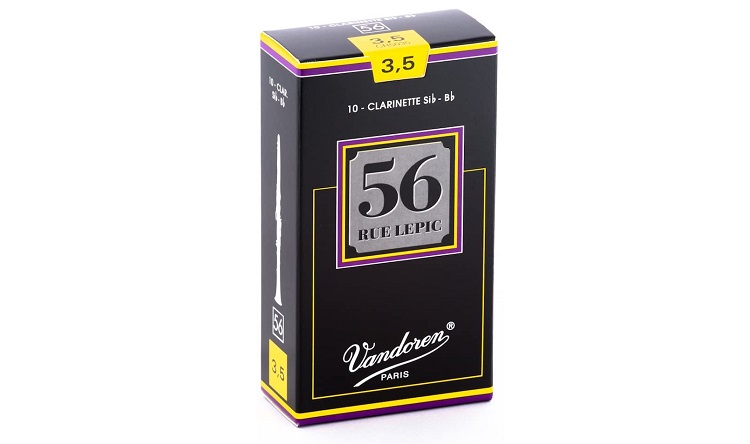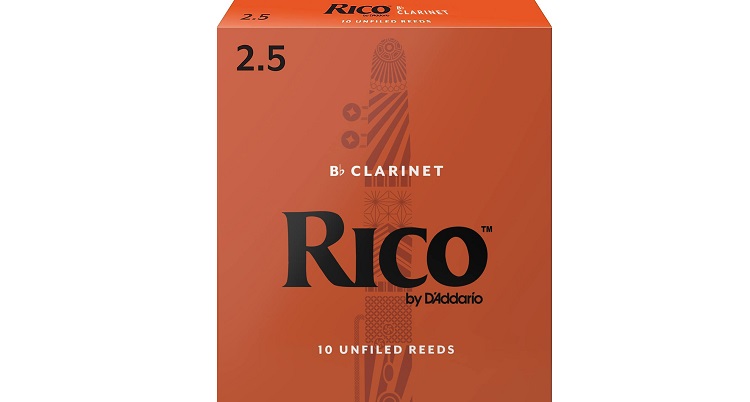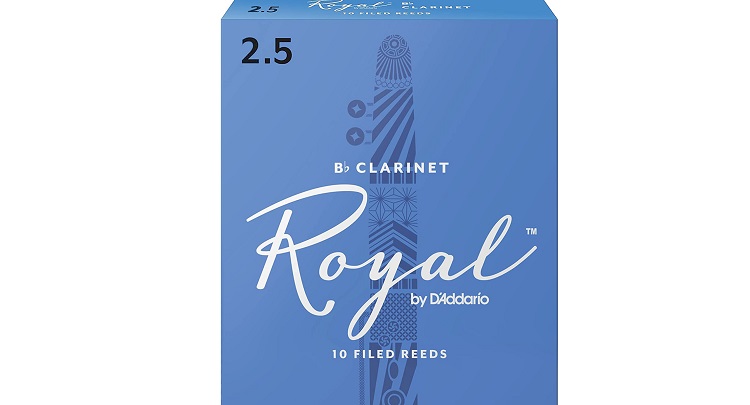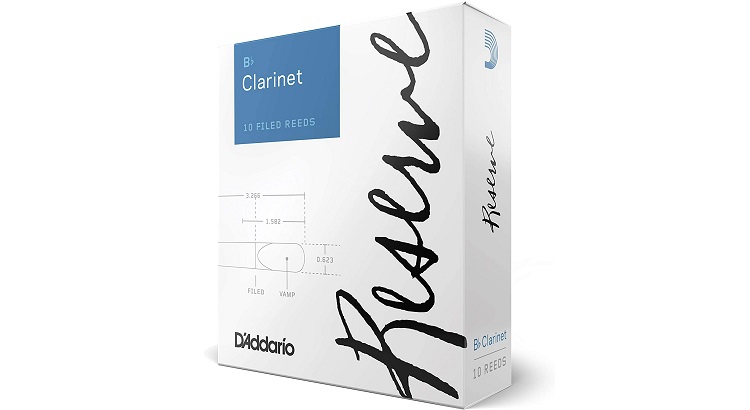- Best Beginner Clarinet: How To Choose the Right One - November 29, 2021
- How to Find the Best Clarinet Reeds - October 7, 2021
- How to Find the Best Alto Saxophone: Our Top Tips! - October 2, 2021
The reed on a woodwind instrument, such as the clarinet, is an essential, if not vital, part of the instrument. The reed is the main object in sound production. When the air is blown on the instrument, the reed vibrates, which then creates the sound. Without the reed, there will be no sound, rendering the clarinet quite useless.
Although the reed has the main objective of creating sound, there are various reeds available for different uses. This guide will provide more details on the various aspects that reeds have to offer. I will touch on the differences between reed sizes, differences in strength, materials used, and the various sounds that reeds offer.
Decision Making Tips
Reed Strength Size
All clarinet reeds are divided into different sizes ranging in numbers starting with one and moving up to five. The numbers determine the strength of each reed’s softness or hardness. The lower the number, the softer the reed. The higher the number, the harder the reed.
A hard reed will give the player much resistance when trying to play the instrument. The sound from the harder reed will often be airy and muffled.
I would encourage beginner players to stay away from harder reeds and look at purchasing and playing on softer reeds, starting with strength sizes 1 to 2.5. The harder reeds will often be difficult for beginner players to produce a sound and completely discourage them from playing the clarinet altogether.
More experienced players will have developed stronger lip and mouth muscles and will feel more comfortable playing on the stronger strength reed types. More experienced players should look at playing on reed strength sizes 3- 5.
Sound Quality
The information above about reed strength sizes is a very general approach to reed strength for the intermediate to experienced player. However, beginner players should always opt for a softer/smaller reed size.
The more experienced player may want to experiment a bit more with various clarinet reed types. There are a few things that one should keep in mind when experimenting with different reeds.
Mouthpieces
Beginner clarinet models often come with a standard mouthpiece. The standard mouthpiece will be able to play pretty much any reed and is really dependent on the player’s clarinet ability and experience.
Most intermediate to professional clarinet models have their mouthpieces bought separately. The choice of the reed will depend on the mouthpiece tip opening.
A mouthpiece that has a wider tip opening will require a softer and smaller-sized reed than the professional player is used to. The wider tip opening allows for more sound projection.
For optimal sound projection, it is strongly advised that the player looks to playing on a softer reed as opposed to a harder reed which will provide far too much resistance, causing an airy sound or no sound at all.
Mouthpieces with a smaller tip opening will require harder reeds for optimal performance. A softer reed on a smaller tip opening could cause the reed to stick to the mouthpiece resulting in a lack of vibration. This will also depend on the player. A softer reed on a standard smaller tip-opening mouthpiece will work just fine for a beginner player.
Music Style
There are few factors that contribute to the different music genres and styles of playing. Such factors include the clarinet itself, the mouthpiece, and the reed. All three of these factors work together to create the best sound for the player.
Clarinet players who specialize in jazz music will often opt for a sound that will offer projection and perhaps a more airy kind of “cool jazz” sound. A softer reed and a wider tip opening will be perfect for this type of playing.
Clarinet players who specialize in classical or more modern and contemporary music prefer a strict bright or dark tone (depending on preference) with no airy sound. The best combination would be a hard reed with a medium tip opening, offering an even and solid tone with just the right amount of projection.
Reed Materials
Traditional clarinet reeds are mass-produced and made from cane. These cane reeds are also handcrafted, resulting in higher quality and consistent reeds. There are also various brands available that make synthetic reeds.
Personally, I Would encourage every clarinetist to start off on a cane reed but explore and experiment with some synthetic reeds available on the market.
Reed Brands
There are various reed brands on the market. Each reed brand offers different uses for the various players looking to produce bright or dark tones in jazz, pop, or classical music. The following brands offer some of the best reeds on the market:
Vandoren
Vandoren is a popular French brand that has been producing excellent quality reeds for many years. Vandoren offers a variety of reed styles being the traditional, the V12, V21, and the 56 rue Lepic.
Vandoren Traditional
The Vandoren traditional reed is an excellent reed choice for all clarinet players on any level. The traditional reeds provide perfect execution in terms of articulation and dynamic ranges. These reeds allow the player to play softer sounds (pianissimo) in the higher register of the instrument with ease.
The traditional reeds are available for Bb, Eb, and Ab clarinets and come in either a box of 10 or 50 reeds individually wrapped like beautiful French chocolate.
| Pros | Cons |
|
|
Vandoren V12 Reeds
The Vandoren V12 reeds are made from the same cane tubes used to produce reeds for the alto saxophone. The V12 has a thicker tip, increasing the longevity of the reed.
The thicker tip combined with the now longer palette allows the reed to vibrate more, resulting in a richer sound. The reeds come in all sizes, but the sizes differ a bit compared to the traditional ones. The 3 ½ + size was introduced as an easier means of comparison to the traditional reed sizes. .
Vandoren V21 Reeds
The Vandoren V21 reed was introduced a few years ago. The reeds design combines the shape of the 56 rue Lepic with the profile of the V12 reed. The reed was designed for optimal response in comparison to the other Vandoren reed styles. The reed is designed to handle larger interval leaps with ease.
Personally, I do not like the V21 reeds as I found them to be overly hard and difficult to play on. However, I encourage you to try these reeds out for yourself.
I would advise that if you are a user of the Vandoren traditional reed type, that you experiment with different sizes. I managed to play on one very good V21 reed that produced a beautiful rich tone. However, the inconsistency of reeds in a box was an annoyance.
Vandoren 56 Rue Lepic
The 56 rue Lepic reeds are produced from a thicker cane and are similar to a German-designed reed. These reeds provide a focused sound and quicker response in all registers of the clarinet.
The strength gradations are smaller in comparison to other Vandoren reed types. This allows for a more consistent reed. Consistency is an important factor when purchasing a box of reeds.
Rico by D’Addario
The Rico by D’Addario reeds are well known as beginner reeds. The company, D’Addario, responsible for both the Rico and Rico Royal reeds, has recently tried to rebrand their reeds. For quite some time, the blue box of Rico Royal reeds has been seen as superior to the orange box of Rico reeds. However, this is not necessarily the case.
Both reeds are ultimately the same. The difference is that the orange box of Rico reeds is unfiled, and the blue box of Rico Royal reeds is filed.
The Rico unfiled is an American slab of cane to produce to the reed. The tip is softer, making it easier to produce a sound hence, why this reed is popular with beginner players.
Rico Royal by D’Addario
The blue box of Rico royal reeds is a French cut and is able to produce a fuller and richer sound. Both the Rico and Rico Royal reeds are popular with jazz players due to their easy response and sound production.
Both the Rico and the Rico royal reeds by D’Addario are brilliant reeds for all players and perfect for beginners. Ultimately, either reed is neither jazz nor classical, but it comes down to the preference of the musician.
| Pros | Cons | |
| Rico |
|
|
| Rico Royal |
|
|
D’Addario Reserve Range
D’Addario offers a reserve collection of clarinet reeds. The reserve collection of reeds come in the D’Addario Reserve, D’Addario Reserve Classic, and the D’Addario Reserve Evolution. Each reed offers either a filed or unfiled cut with specifications to enhance the clarinetists playing.
D’Addario Reserve Comparison |
|
| D’Addario Reserve |
|
| D’Addario Reserve Classic |
|
| D’Addario Reserve Evolution |
|
Legere
Legere is a well-known reed manufacturing company specializing in synthetic reed productions. Synthetic reeds are safe to use and are safe for the environment. The Legere reeds are available in three brands, European, classic, and signature cuts. I have listed two of the three synthetic cuts as my preferred synthetic reed cuts.
Legere Synthetic Reeds Comparison |
|
| Legere Classic Cut |
|
| Legere Signature Cut |
|
My Recommendations
Personally, I prefer cane reeds over synthetic reeds. Although synthetic reeds have advanced over the years, sounding almost identical to cane reeds, there is still much more than a cane reed can offer that a synthetic reed cannot.
Advantages and Disadvantages of Cane and Synthetic reeds |
||
| Pros | Cons | |
| Cane reeds |
|
|
| Synthetic reeds |
|
|
Other Tips
- When purchasing reeds, always make use of a reed chart as the reed sizes differ across the various reed brands.
- Make sure that you match your reeds according to your mouthpiece and your ligature. Some reeds are thin and may fall through the ligature.
- Experiment with different reed brands and reed sizes. Remember that the choice of the reed is a personal preference.
Frequently Asked Questions (FAQ)
Answer: Clarinet reeds are available in various sizes. The sizes in reeds range in numbers starting with one till five. There are also half sizes in between.
The higher the number, the harder the reed, meaning you will have more resistance when trying to play. You should purchase a clarinet reed based on your level of playing. Typically beginner players should start on a 1 or 1.5 reed. Intermediate to advanced players should look at sizes 2.5 moving up towards 3.5.
Answer: A reed that is too hard will sound airy, and some notes will not be able to sound due to too much resistance from the reed. It would be best to switch to a softer (lower sized) reed to avoid this. Alternatively, your coils soften the hard reed by submerging the tip in water for about 2 minutes.
Answer: The durability of clarinet reeds depends on the player. A reed for a beginner player can last up to 4 months and perhaps six months. The more experienced player practicing for longer hours will have to replace reeds every 4- 6 weeks.
Conclusion
Personally, I prefer the Vandoren Traditional cut reeds as they offer the consistency needed in my playing. These reeds are a harder cut compared to Rico and Rico Royal reeds. I prefer harder reeds as it produces a warmer, richer, and even tone across all the registers.
I have always been able to fully express myself in my music with the traditional cut. These reeds also last much longer than other reeds that I have tested. I will admit that there are some reeds in a box of Vandoren Traditional that are not consistent in strength size with the other reeds in the box.
However, this inconsistency is found in most mass-produced reed brands. For the reed ultimate consistency, you should look at purchasing handcrafted reeds.
The Rico and Rico Royal selection are perfect reeds for any player, but I would mainly recommend these reeds for beginner players or players with wider tip openings on their mouthpieces.
These reeds are generally softer than Vandoren reeds which is perfect for the beginner player. These reeds are incredibly easy to play on and produce a sound on virtually the first attempt.
Synthetic reeds are really cool and a lot of fun to mess around on. However, I would not use a synthetic reed as my main reed due to the poor intonation issues that come along with it.
I do encourage you to try the synthetic reed as it really is down to preference. I use a synthetic reed as an emergency reed in case I lose or break my last cane reed.
Looking for more interesting readings? Check out:


